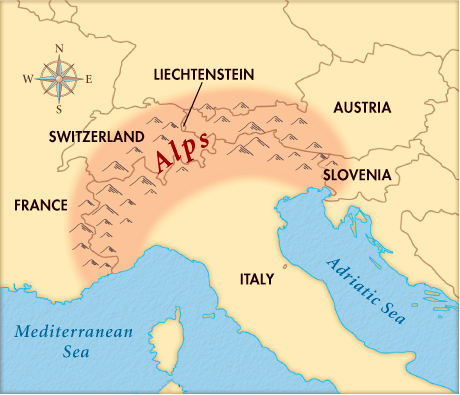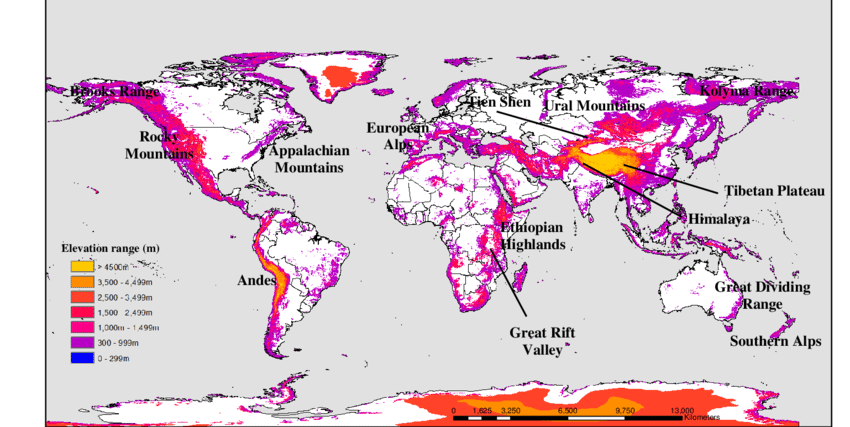Geography
Changing Landscape of Alps: Europe
- 20 Jul 2021
- 4 min read
Why in News
A recent study by the ETH technical university in Zurich, Switzerland shows that climate change has dramatically altered the Swiss Alp landscape.
Key Points
- Important Findings:
- Melting glaciers have created more than 1,000 new lakes across the mountains.
- The inventory of Swiss Glacial lakes showed that almost 1,200 new lakes have formed in formerly glaciated regions of the Swiss Alps since the end of the Little Ice Age around 1850 and around 1,000 of them still exist today.
- Glaciers in the Swiss Alps are in steady decline, losing a full 2% of their volume last year alone.
- Even if the world were to fully implement the 2015 Paris Agreement, two-thirds of the Alpine glaciers will likely be lost.
- The Paris Agreement is a legally binding international treaty on climate change. It was adopted by 196 Parties at COP 21 in Paris, in December 2015.
- Melting glaciers have created more than 1,000 new lakes across the mountains.
- Alps:
- About:

- The Alps emerged during the Alpine orogeny (mountain-building event), an event that began about 65 million years ago as the Mesozoic Era was drawing to a close.
- Alps are young fold mountains with rugged relief and high conical peaks.
- They are the most prominent of western Europe’s physiographic regions. Some 750 miles long and more than 125 miles wide at their broadest point between Garmisch-Partenkirchen, Germany, and Verona, Italy, the Alps cover more than 80,000 square miles.
- The Alps extend north from the subtropical Mediterranean coast near Nice, France, to Lake Geneva before trending east-northeast to Vienna, Austria. There they touch the Danube River and meld with the adjacent plain.
- Because of their arclike shape, the Alps separate the marine west-coast climates of Europe from the Mediterranean areas of France, Italy, and the Balkan region.
- Countries Covered:
- The Alps form part of France, Italy, Switzerland, Germany, Austria, Slovenia, Croatia, Bosnia and Herzegovina, Montenegro, Serbia, and Albania.
- Only Switzerland and Austria can be considered true Alpine countries.
- Important Peaks:
- Mont Blanc is the highest peak in the Alps and in Europe, reaching a lofty 4,804 meters above sea level. It is located in the Graian Alps and lies within France, Switzerland, and Italy.
- Monte Rosa is a massif (a compact group of mountains) consisting of several peaks. The highest peak in this range (Dufourspitze) has an elevation of 4,634 meters, claiming the title of Switzerland’s highest peak.
- Dom, which is located near Monte Rosa, Dom stands at 4,545 meters and is known as one of the “easier” tall peaks in the Alps to summit because of it’s straightforward routes.
- Other major peaks are Liskamm, Weisshorn, Matterhorn, Dent Blanche, Grand Combin etc.
- About:





